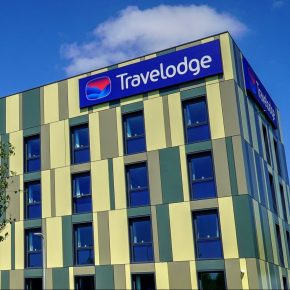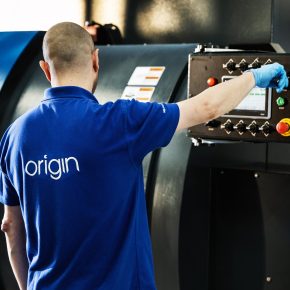
GUEST ARTICLE: The time is now for timber in UK architecture
The UK needs more housing and infrastructure, but it also needs to decarbonise its built environment, which currently represents a quarter of its total footprint. It’s in the face of this catch-22 that timber could step in. Fears over safety and durability mean we are lagging behind other major economies in Europe and beyond who have embraced timber. Wood can be a safe and sustainable staple of UK construction if it extends beyond a handful of flagship projects, as this guest article explains…
It was in the shadow of the Grenfell Tower tragedy that legislation was quickly introduced to address the dangers of plastic-and-aluminium cladding, but which also put the brakes on timber construction. Blanket bans were lifted in 2020 in favour of a more nuanced approach that separated structural timber from insulation and cladding, but hesitancy endures.
Meanwhile, others streak ahead with beautiful, celebrated projects and forward-thinking legislation. We need only look to recently approved plans for the world’s tallest timber building in Perth, which will join the Sara Cultural Center in Skelleftea, Sweden as a timber skyscraper taking this old material to new heights.
Structural mass timber, the material of choice for architects building with timber, is made of layers and layers of wood laminated together, giving it an inherent resistance to fire as the outer layers char, leaving the inner structure undamaged. Think of, or look up, an image of the aftermath of a forest fire – rather than a barren, desert-like landscape, the fire often leaves thousands of trees charred and blackened but ultimately left standing.
The charring process is also at the heart of how cutting-edge treatments further protect structural timber from fire.

Paul Cave, UK Sales Director at global wood treatment company Koppers, comments: “Rather than representing the beginning of the end, charring is a sign of wood protecting itself.
“The chemicals in fire retardants react with gases and tars to convert them to char, which not only preserves strength and stability, but reduces flame spread and travel to slow down combustion. This removes a major barrier to its use in construction – if timber gets the right treatment, it no longer needs the silent treatment.”
But the most promising sign of a change in attitude comes from major insurance provider Aviva, which has declared its ‘expanding appetite’ to insure commercial properties including engineered timber. It’s possible that the firm has taken a look at some of the projects making the headlines in Europe and North America, of which 843 N. Spring St in Los Angeles is a beautiful example. But insurance is about quantity, not just quality, so it’s more likely that Aviva has at least one eye on moves by EU legislators to scale up timber construction.
An agreement signed by all 32 municipalities in Amsterdam requires the use of wood as the primary construction material for 20% of residential buildings by 2025. In France, new buildings must contain 25% bio-based materials by 2025, rising to 50% by 2030. Plans in Finland aim for even bigger things, aiming to boost use of wood in public construction to 45% market share by 2025.
No shortage of appetite here, then, but taking timber mainstream won’t be without its challenges, not least loosening concrete’s incredibly tight grip on its eye-watering market share in construction and deep foundations in many large construction companies. Safe and sustainable supply of timber is another pertinent question, but one that there are frameworks in place to answer. If done right, increased demand for treated timber will have a positive impact – harvesting mature trees for timber allows forests to be refreshed and retain their capacity as carbon sinks.
Third-party verification will also have a large part to play, with The Forest Stewardship Council and Programme for the Endorsement of Forest Certification currently the gold standard. It’s likely that increased demand and competition will smooth out supply bottlenecks in the production of structural timber and establish a business case that runs the length of the supply chain.
For now, industry voices are the main advocates of timber – Waugh Thistleton are the architects of the UK’s latest timber success story, The Black and White Building. This shared workspace in Hackney where wood is both style and substance was completed in January 2023 and swiftly followed by Timber Typologies, a guide to understanding timber construction released in conjunction with Timber Development UK.
More important than any helping hand will be a (metaphorically) concrete incentive from Westminster, either in the form of a tax break or a requirement to get working with timber, both of which are more likely to move the dial with the industry big hitters who are currently focused on keeping their heads above water.
With a push in the right direction, however, they’re likely to find that timber is a material much better suited to the ‘Construction 4.0’ approach that the built environment needs to both hit its emissions targets and protect its margins. Timber sequesters carbon, rather than releasing it, and is often able to store the same amount as would be released when using concrete for the same project. There is also scope for large-scale prefabrication of timber in offsite factories, allowing for rigorous quality control and easier, faster construction.
Ultimately, it is education that will allow treated timber to grow in the UK into the secure and sustainable material that it has elsewhere. It has to overcome fears around safety and durability and compete with arguably history’s most successful building material, but the new generation of structural timber is up to the task. With a leg up from legislators and an open conversation about the potential of treated timber, the concrete crisis could be the making of a new building block for a greener built environment.
Latest news

21st November 2024
Altro distils style and performance at English Spirit
English Spirit Distillery has used an extensive package of Altro products front and back of house, in their new visitor centre café, shop and viewing area for the working distillery.
Posted in Articles, Bathrooms, Bedrooms & Washrooms, Building Industry News, Building Products & Structures, Building Systems, Case Studies, Floors, Interior Design & Construction, Interiors, Kitchens, Restoration & Refurbishment, Retrofit & Renovation, Timber Buildings and Timber Products, Walls
21st November 2024
Abloy UK creates bespoke locking solution for Secure Information Boxes
Abloy UK has supplied The Safety Letterbox Company Ltd with a bespoke Sentry CL811 Camlock for use in its Secure Information Boxes, assisting life safety and complying with new regulations and legislation for high rise buildings.
Posted in Access Control & Door Entry Systems, Architectural Ironmongery, Articles, Building Industry News, Building Products & Structures, Building Regulations & Accreditations, Building Services, Case Studies, Facility Management & Building Services, Health & Safety, Posts, Restoration & Refurbishment, Retrofit & Renovation, Security and Fire Protection
20th November 2024
CUPA: CUPACLAD enhances hotel aesthetics with a creative natural slate façade
Situated at the northern edge of a newly developed retail park near Bristol, the Abbey Wood Travelodge was conceived as part of the company’s new Budget-Luxe line of hotels – it features CUPACLAD, from CUPA PIZARRAS.
Posted in Articles, Building Industry News, Building Products & Structures, Building Systems, Case Studies, Cladding, Concrete, Cement, Admixtures, Facades, Posts, Restoration & Refurbishment, Retrofit & Renovation, Walls
20th November 2024
Origin launches in-house powder coating facility
Origin’s latest investment is set to redefine industry standards as it launches its own in-house powder coating facility.
Posted in Aluminium Products, Articles, Building Industry News, Building Products & Structures, Building Systems, Doors, Glass, Glazing, Innovations & New Products, Paints, Coatings & Finishes, Restoration & Refurbishment, Retrofit & Renovation, Site Preparation, Windows
 Sign up:
Sign up: